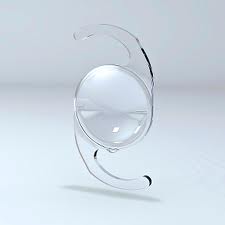Freedom from Spectacles
For some patients the wearing of glasses and the constant on off on off on off of reading glasses becomes unbearable. For this group of patients there is now the option of premium multifocal intra-ocular lenses.
My favourite of the multifocal intra-ocular lenses is the Topcon Lentis M Plus

There is a trade off however that must be fully understood before any patient makes this choice. Essentially all multifocal lenses will cause halo's and glare. This is most evident when driving at night, but can be annoying when under bright strip-lighting.
The sequence of treatment is also more complex and inevitably more expensive. The steps involve:
1. Pre-assessment to include corneal topography, refraction, biometry, and dilated fundoscopy.
2. Pre-treatment prior to the surgery with artificial tears and anti-inflammatory drops. It is important to have any dry eye fully under control.
3. Rapid sequential bilateral cataract extraction and lens insertion. The best timing is to have both eyes operated within 2 weeks, as this allows the eyes and the required neural adaptation to begin to use the multifocal lenses.
4. Artificial tears and anti-inflammatory drops post op.
5. A period of adjustment to the halo's and glare. Almost all patients dislike these symptoms for the first 6 weeks but almost all are no longer bothered by them by 6 months.
6. YAG laser capsulotomy treatment is usually required at 3 months.
7. For 5 to 10% of patients additional laser surgery is required to sharpen the vision.
8. A small number of patients cannot get used to the multifocal lens and it then needs to be removed and swapped for a normal lens.
9. 10% of patients will still prefer to use reading glasses for near tasks.
10. 5% of patients express some disappointment with the multifocal lens.
The multifocal lenses are however effective. The simple stats are:
Without multifocal lenses 90% of patients need to wear reading glasses and 10% suffer glare.
With multifocal lenses 10% of patients need to wear reading glasses and 90% suffer glare.
Am I a suitable patient?
Multifocal lenses may suit you if:
1. You are happy to swap the need for reading glasses for some halos and glare.
2. You do not suffer with moderate or severe dry eye.
3. You do not have any early macular degeneration.
If you think you would be interested in multifocal lens implants then you would need to discuss your options with your cataract surgeon. These lenses are not available on the NHS.
The typical all inclusive cost for the pathway is £3400 per eye - about £1000 more per eye than normal cataract surgery








